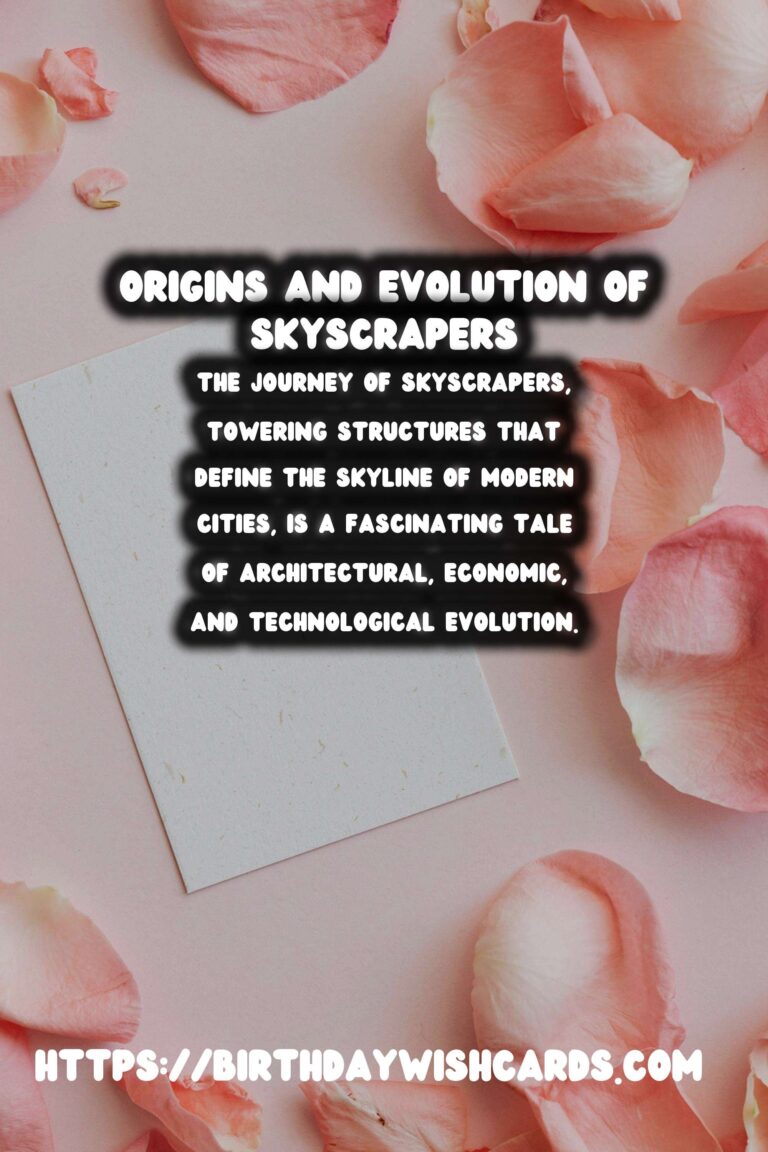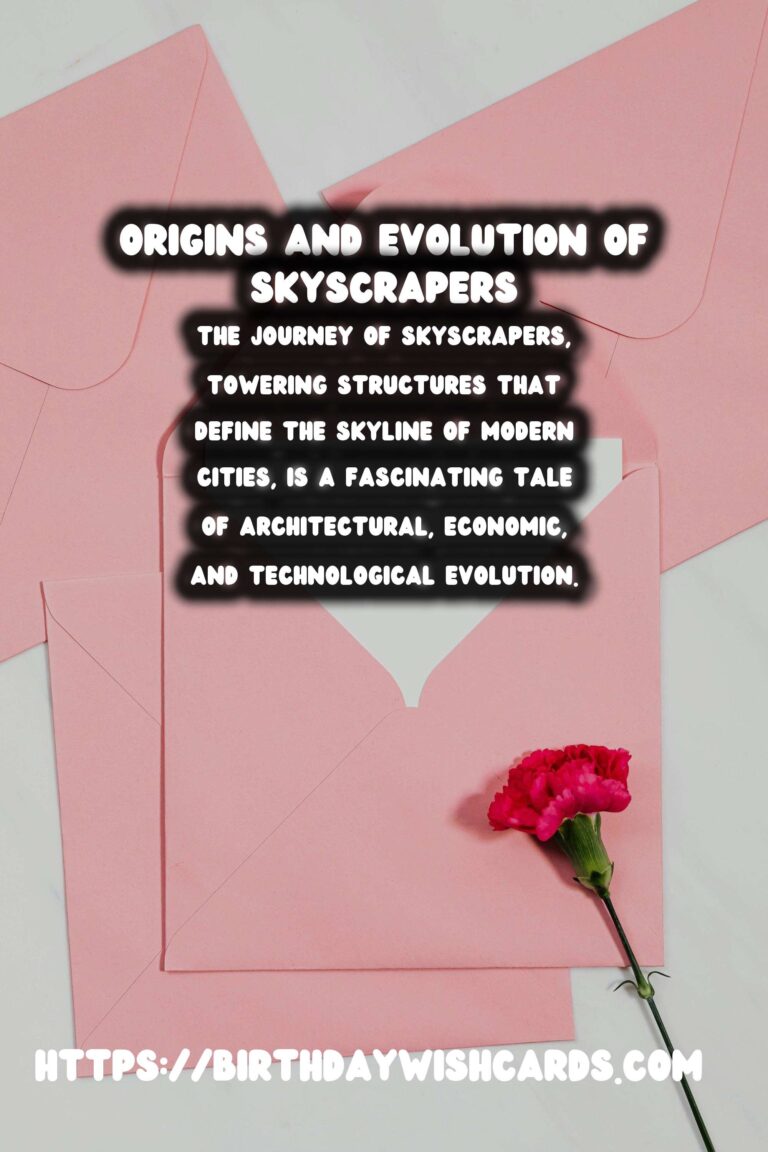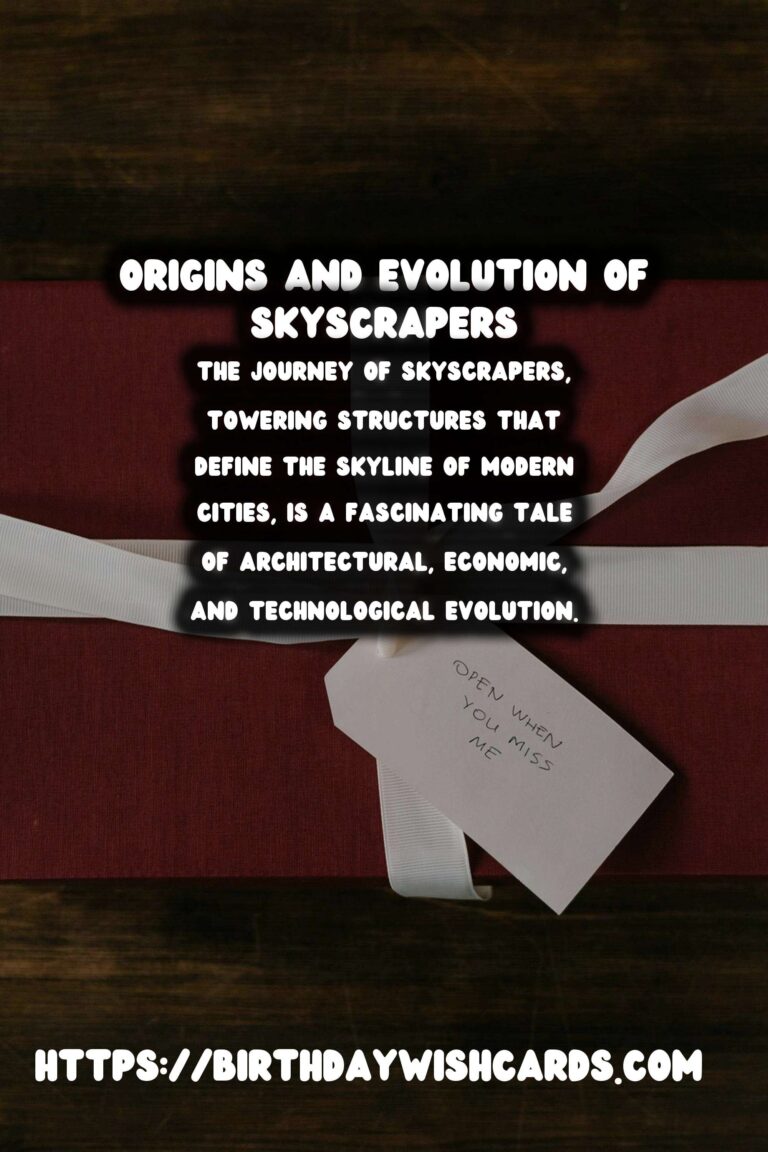
The journey of skyscrapers, towering structures that define the skyline of modern cities, is a fascinating tale of architectural, economic, and technological evolution. From their modest beginnings in the late 19th century to the architectural marvels gracing today’s urban landscapes, skyscrapers are the epitome of human ingenuity.
The Early Days: Humble Beginnings
The origins of skyscraper architecture can be traced back to the development of two critical technologies: the elevator and steel-frame construction. Before skyscrapers could soar to great heights, these innovations needed to mature. The first skyscraper, the Home Insurance Building in Chicago, stood at a humble 10 stories when it was completed in 1885. Designed by architect William Le Baron Jenney, this revolutionary structure used a steel frame to support its weight, a departure from the masonry walls that previously limited building heights.
The Rise of Modern Skyscrapers
The success of the Home Insurance Building heralded an era of rapid skyscraper development. Cities like Chicago and New York became testbeds for architects and engineers. The early 20th century saw the rise of iconic structures like the Woolworth Building, which stood as the world’s tallest building from 1913 until 1930. This era also witnessed the Art Deco movement’s influence, characterized by buildings like the Chrysler Building and the Empire State Building, whose designs combined aesthetic elegance with structural innovation.
Post-War Boom and International Styles
Following World War II, advances in engineering and materials science led to even taller and more sophisticated designs. The International Style, which emerged during this period, emphasized function over form, creating sleek, minimalist steel-and-glass structures epitomized by the Lever House and the Seagram Building in New York City. This style set the stage for a wave of contemporary architecture that appreciated both the aesthetic and practical aspects of skyscraper design.
Technological Advances and Modern Skyscrapers
As we moved into the late 20th and early 21st centuries, technological advances like computer-aided design (CAD) software, and new materials such as high-strength concrete, further expanded the possibilities of skyscraper design. The Burj Khalifa in Dubai, currently the world’s tallest building, is a testament to these advancements, reaching heights unimaginable to earlier architects. The integration of green technologies, like solar panels and energy-efficient systems, is now critical to new developments, reflecting global concerns about sustainability.
Architectural Styles and Cultural Influences
Throughout the history of skyscrapers, cultural influences have been as significant as technological ones. The design of skyscrapers often reflects the cultural aspirations of their cities and countries. Skyscrapers like the Petronas Towers in Kuala Lumpur or the Shanghai Tower in China symbolize not only architectural achievement but also national pride and economic power. Embracing a blend of traditional elements and futuristic designs, these buildings become cultural icons in their own right.
The Future of Skyscrapers: Towards the Sky and Beyond
Looking forward, the future of skyscraper architecture seems boundless. As urban populations swell, the demand for vertical space continues to rise. Innovations such as vertical forests, rotating skyscrapers, and even concepts for skyscrapers in space are being explored. These forward-thinking designs are not just about height but also about integrating with the environment and enhancing the quality of life for their inhabitants.
In conclusion, the architectural history of skyscrapers is a testament to humanity’s relentless pursuit of progress. From their humble beginnings, they have evolved to become landmarks of innovation, exerting a profound influence on urban landscapes worldwide.
The journey of skyscrapers, towering structures that define the skyline of modern cities, is a fascinating tale of architectural, economic, and technological evolution. The success of the Home Insurance Building heralded an era of rapid skyscraper development. 









#architecture #skyscrapers




